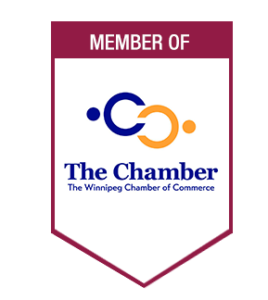Fixed Price vs. Time and Material- What is Best for Your Project?
Initially, outsourcing agreements were established on a fixed price basis, but there is now another widely utilized business model: time and material. Choosing the correct price contract can be a difficult task since it must take into account your company’s operational procedures, contracted needs and goals, as well as general expenditures incurred by the vendor.
These are the most frequent and time-tested software development pricing models; nevertheless, it is worth mentioning that firms now use hybrids and combinations. In this blog, we will look at the benefits and drawbacks of time and materials contracts vs. fixed pricing contracts and how we can use them in software projects.

Fixed-Price Model
A fixed-price agreement is a one-time payment contract in which a service provider is responsible for executing the project within the agreed-upon budget. It can be a good option when the needs, specifications, and rates are very predictable; otherwise, the cost will be anything but consistent. To achieve acceptable end outcomes, a customer should be able to convey his clear vision of the product to engineers.
Furthermore, there is a “ concrete” deadline during which the client is “assured” to get the finished product. And, with a clear plan that includes goals and milestones, they can readily follow the project’s progress. There is no need for the customer to oversee the process, so everything appears to be straightforward and predictable. A Fixed-Price model may be appropriate for your project if it is small, has well-defined characteristics, and has minimal chance of things changing.
The Fixed Price Model: Practice and Benefits
A Fixed-Price model is an option to explore if you have a comprehensive strategy and a list of rules that you are positive will not alter. You can use this model for:
> Clearly defined requirements and timelines
> MVPs
> Limited or set budgets
> Small tasks having a limited scope of work
Predictability
Predictability is the primary goal of each entrepreneur in the company. Company strategy often necessitates the transfer of defined timelines and figures to the budget. Exact estimates can be obtained by planning spending for 1–3 months in advance. However, if product development would take 4 months or longer, it is normal that overall outlays will be difficult to predict, and in such instances, different pricing models are recommended.
Transparency
There will be no surprises when we have stated criteria, a clear budget, and pre-arranged timeframes. In addition, the interaction between project managers and contractors regularly guarantees scope compliance and maintains margins. This helps maintain transparency in the whole project management process.
Seamless Management
Payments to the service provider are primarily dependent on a proportion of the job completed. Because expectations are explicit and predictable, such a process needs little participation. This allows you to pay attention to other vital aspects of the project and ease up money management.
Disadvantages of the Fixed-Price Model
Lack of Flexible Framework
The main disadvantage of a fixed-fee agreement is its lack of flexibility. In addition, as a client, you are liable for any emergent modifications that you initiated or exceed the vendor’s competence.
At some time throughout your project, you may discover that you will not require one of the features specified in the contract but will require a different one. You’ll also need a newer API version and support for the new system. Changing the scope of work under a Fixed-Price collaboration model necessitates additional processes and, in most cases, disrupts the formal flow.
Lack of Accountability
Less responsibility can be viewed as both a pro and a disadvantage, depending on the circumstances. Regular reporting and discussions between the client and team are not part of such a strategy. Because all of the management is done by team members, you don’t need to set aside time for extensive project engagement. However, this does not imply that you will be unaware of the workflow.

The Time and Material Model
A time and material (T&M) contract is entirely different from the fixed price model. It assumes charging clients for actual job scope based on hourly labor rates. Thus, customers are charged for the number of hours they work for a particular job and the cost of materials. The major advantage of the T&M model is its flexibility and ability to change criteria, move directions, substitute features, and involve users to achieve the exact result.
Time and Material Framework: Practice and Benefits
In practice, how does it work? We break down the entire project into smaller jobs, each with an estimated duration, labor, and cost. When you agree to the given pricing, the development team can go to work right away. There will be numerous meetings with the team throughout the project where you may make ideas and request changes. As a result, at the conclusion of the project, you will have a high-quality output that precisely meets your requirements. The Time and Material contract may work for:
> Long-term initiatives with changing needs
> The project scope is not yet completely defined
> You want the ability to change the scope or workloads as needed
Flexibility
Following the completion of a project, firms might adjust the volume of work, update materials or designs, move the focus, or change features using unit-price contracts.
Dynamic Workflow
One of the most crucial aspects of bigger projects is the dynamic work scope. There may be a broad objective that should be attained, but understanding how it will be accomplished is not critical ahead of time. It is often preferable for startups and mid-sized businesses to make decisions while developing a strategy and implementing specialized software. This concept is based on the agile technique.
Better Timeframe
By avoiding the fixed-price bidding procedure, you may save time and get started right away. Furthermore, blended rates enable you to monitor how much time the team spends on each feature and commit, motivating it to work more effectively.
Disadvantages of Time and Material Contract
Lack of Budget Control
The major downside of a T&M contract is the lack of budgetary control. As a result, the overall cost may exceed the budgeted amount.
To make budget control easier, you may ask for frequent comprehensive reports on how much time the product owner spent on a specific activity, how many individuals were engaged, what materials were purchased, and any other unexpected expenditures.
Deeper Involvement
Deep engagement from you is necessary to ensure that the team delivers on the authorized scope and within the allotted number of hours. It demands regular monitoring of job progress, resources utilized, budget expenditures, and frequent meetings with the development team. Monitoring is especially crucial because the contract does not specify a date, and you don’t want a six-month project to stretch into a year.
Conclusion
Both forms of cooperation models have advantages and disadvantages. Therefore they are best suited for various sorts of projects. A Fixed-Price contract is a suitable option if you have a small project with precise parameters or are confident that you will require no adjustments in the project. You will be aware of the project’s cost in advance, and your product will be produced on time.
A Time and Material contract might be a preferable alternative for more extensive or longer-term projects. It provides freedom and control over product production while also assisting you in staying within budget. However, because there is no exact end price or deadline date, you must keep track of the costs and the project’s progress.
Let's Talk!
Learn more about how Greelow can boost your company’s digital transformation. Book a call now
Awards
Top 5 IT Company in the Region
Clutch And The Manifest

Their full commitment to delivering the product on time was remarkable. We also appreciate the way they advised us beyond the technical part. We felt very accompanied through the whole proccess and the final outcome was incredible."
Diego Fernandez - Head of Marketing at GREENPEACE
Our Team

Javier Holcman
CEO

Jonathan Abel
Business Manager

Andrea Janna
HR Manager

Eze Wagmaister
Regional Director for Israel and EU

Romi Komarovsky
Head of Finance

Leo Holcman
Principal Engineer




